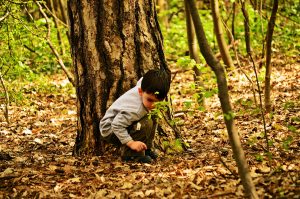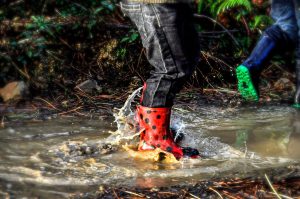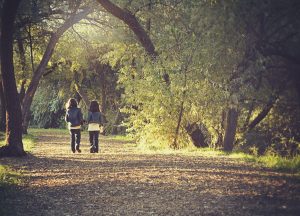Lost awe and wonder?
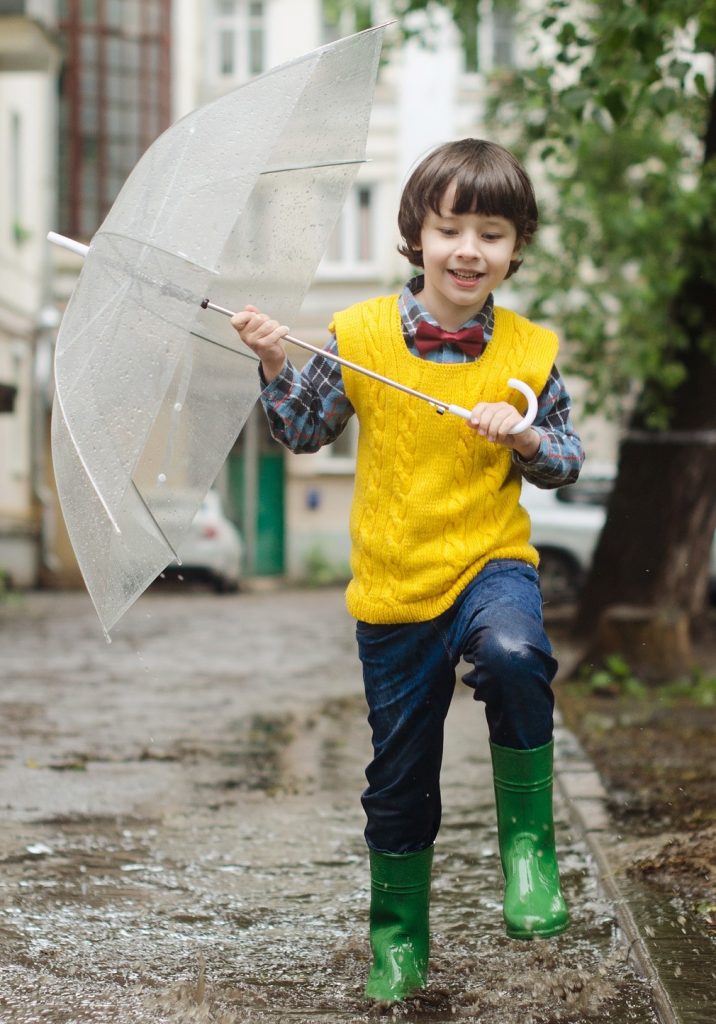
In these uncertain times, it is important to focus on positive experiences in the natural environment, whatever the weather. Whether you look up into the sky or down to the Earth, there is potential for awe and wonder to be found all around us.
In today’s blog, PSTT Fellow and Regional Mentor Kathy Schofield discusses the importance of finding ‘lost’ awe and wonder from simple outdoor activities, encouraging parents and teachers to look for these moments with their children.
Yesterday, as I was working as a volunteer gardener and interacting with visitors, I realised how weather plays a big part in our lives as adults and how talk of temperatures and wind directions leads to discussions about nature and the outdoors. It left me wondering if we, as teachers and parents, often talk to children about the weather and its implications by focusing more on the restrictions it can bring rather than in positive terms. My suggestion is this: Let’s not think about the fact that we can’t have playtime because it’s raining, but embrace the wonder of the rain: how it’s formed, the size and shape of raindrops as they run down the windowpanes, where the puddles form, their size and shape.
I have been fascinated during online meetings with colleagues across the UK recently, by how we can identify where each is located from what they are wearing (dictated by the weather they are experiencing). I have observed trees being blown about outside someone’s window, indicating it’s a blustery day in Northern Ireland. A colleague in Scotland generated an engaging chat, sharing the animal tracks she had found in the snow near her home; we became as children, excited by these finds and keen to identify the animals that had created them. Another colleague from Scotland extolled the virtues of the uniqueness of snowflakes, their beauty and diversity; this generated a photo swap of snowscapes from various locations. Each of these examples, in its own way, generated awe and wonder in teachers tired of lockdown, reverting to their enjoyment of weather and nature and finding respite from their busy timetables in the solace of their local environment.
So, with Science Week looming, why not consider using the tag line ‘Lost Awe and Wonder’ and, instead of the stress of trying to work out what children could do at home with minimal equipment, revert to a ‘bygone age’ when we had nature tables and we would go for walks in all weathers, looking for things to put on the nature table. The weather provides many opportunities for inspiration. Think about cloud gazing, “What do you see up there in those billowing or scudding clouds?” My granddaughters never cease to amaze me by what they picture above their heads – they also fill me with wonder! Might simple ideas of gathering items for a nature collection, or noting or photographing and identifying cloud forms do the same for your children or the children you teach?
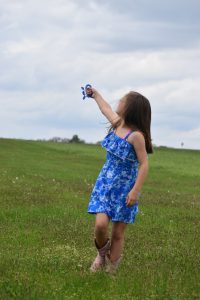 I still remember one of my teachers reading the story of the challenge between the Sun and wind, vying to prove who was the strongest. What do our children think and feel about the Sun and the wind? Can they run and fill a plastic bag with air, or make and fly simple kites?
I still remember one of my teachers reading the story of the challenge between the Sun and wind, vying to prove who was the strongest. What do our children think and feel about the Sun and the wind? Can they run and fill a plastic bag with air, or make and fly simple kites?
There is always ‘slow science’ – if we stop to listen, what do we hear? Shh, you might hear really quiet things, like the ants eating (as noted by my youngest Granddaughter – how wonderful to hear this from a 4-year-old – again I was filled with awe!). Stop and look closely. At this time of year, we are all looking for the first signs of spring, looking forward to the longer days, bluer skies, warmer temperatures, and new life: clumps of snowdrops, leaves coming into bud, ladybirds feeding and birds singing. Let’s share these wonders with children and encourage them to stop, look and listen. I know that none of these ideas are new, but in these unusual times, it’s the familiarity of these actions that supports us too – the unwavering knowledge that the world around us will continue to fill us with awe and wonder, always lifting our spirits.
Children could share what they see around their home with friends and relatives in other places, broadening their horizons and contrasting their experiences, just as we adults have done in our online meetings. Teachers, children, and their parents may find some ‘lost awe and wonder’ in the world around them to carry them through the uncertain weeks ahead.
Leisure by W. H. Davies 1911
‘What is this life if, full of care,
We have no time to stand and stare.
No time to stand beneath the boughs
And stare as long as sheep or cows.
No time to see, when woods we pass,
Where squirrels hide their nuts in grass.
No time to see, in broad daylight,
Streams full of stars, like skies at night.
No time to turn at Beauty’s glance,
And watch her feet, how they can dance.
No time to wait till her mouth can
Enrich that smile her eyes began.
A poor life this if, full of care,
We have no time to stand and stare.’
You can find plenty of materials to support exploration outdoors from the Woodland Trust. Find them via our website here.
When you do return indoors, children might be interested in Play and Learn Science from PBS Kids: 12 simple games that let you explore shadows, weather patterns, forces and much more! Find out more here
Back to blog



 QUICK
QUICK
 MEDIUM
MEDIUM LONG
LONG
